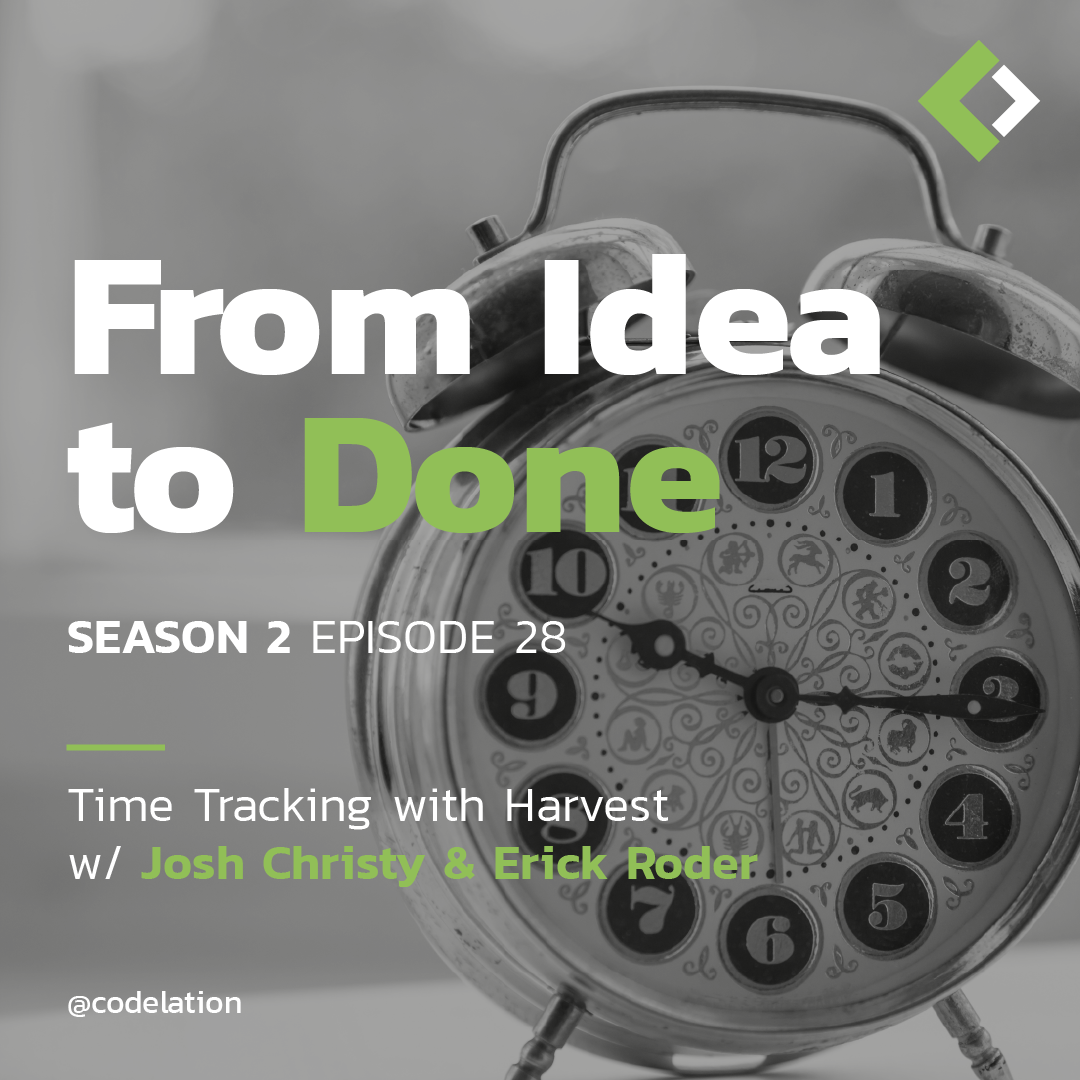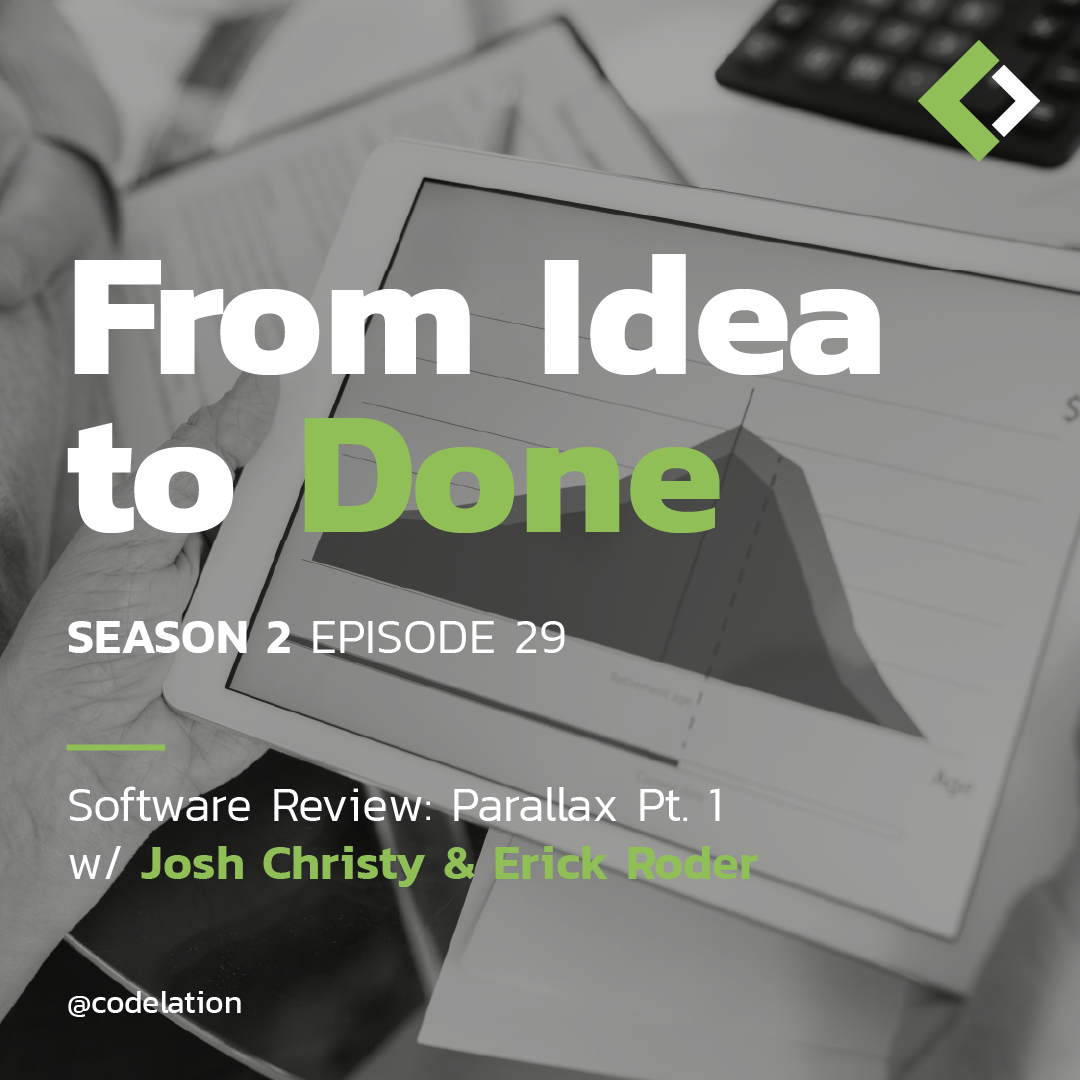Software Review: Parallax Pt. 1

Software Review: Harvest
July 14, 2020Software Review: Parallax Pt. 2 ft. Tom O’Neil
July 28, 2020VO: Get ready for your semi-regular dose of random ideas from the guys at Codelation. We like to talk about big ideas companies that are winning, and those that aren't along with current events in our crazy world of software startups. So come along with Erick and Josh, who challenge you to think big, start small and turn your ideas into something on this episode of, from idea to done.
Josh: Hey everyone, I'm Josh,
Erick: And I'm Erick today's idea is maximizing your project profitability and time management with software interesting topic. And this is kind of going to be the first part in our review of the software parallax. And so Josh, how did you find this product?
Josh: You know, I kind of stumbled upon it. I was talking with someone about, um, business resources and planning and he referred me to Tom O'Neill. Who's the founder and CEO of parallax. And can you give us a little
Erick: Bit of a background on Tom?
Josh: Yeah, I I've met Tom a couple of times before we started working with him and his team over at parallax. And the, you know, the little bit I know is that, uh, he was with the nerdery, which is a software development company, Minneapolis for about 10 years, um, made his way up to CEO before starting parallax.
Erick: So he helped make a pretty good sized, profitable software development company in the Midwest. He kind of seems like a solid person that we should know and take advice from. So,
Josh: If you insist.
Erick: Yeah! So for him, he went from building what we're trying to build and he branched out and he started this new company that helps software developers, you know, do estimates of time and track profitability of projects. Can you explain a little bit of what parallax is and what it does? Yeah.
Josh: Um, I think every business owner out there has a series of spreadsheets that they try to use to track and see how things are going or when we need to hire. Um, parallax is really a tool that helps bridge marketing, sales and operations. Uh, what it's taught me so far is really how to productize our service offerings into something they call a resource plan or, or shape, you know, this allows you Eric to go sell this, this shape or this plan, which is a block of time to the customer without needing, you know, a really deep technical understanding, um, that lets us know how far out we're booked and what's in our pipeline, you know, how much capacity we have. And, um, it's just really a great tool. That's, you know, we're just starting to get into it. Um, but it also ties in with harvest, you know, what we talked about last week, uh, to show us how profitable a project is.
Erick: And it also ties into, um, HubSpot, which is my CRM sales tool. And you know, I've always tried to bridge sales and marketing. And then when you bring operations into that, I think it's going to be kind of next level because we all know how great I am at understanding the deep technical aspects of an app build. No, so yeah, so we've gone through the onboarding process and I'm pretty excited to see their product, help us increase our profitability. I think there's a lot of times like in sales and when business, when you hear the big price and when you bid a project and you just get really excited about that big number, and it's more important to not only hear that big number, but uh, figure out how profitable that project is going to be.
Josh: Yeah. It's not always the top line revenue. It's, you know, how much money you keep at the end of the day?
Erick: Yeah. Yes. And I mean, this goes back to Rick when may made my first job in freshman year of college, I was working at part-time at toys R us, but you know, when it was an actual business and
Josh: Boy you're old
Erick: Yeah and I was in the interview process and my boss, he, he set a $50 Teddy bear on the table. And then he also sat down to PlayStation twos with a couple of games and he asked which one of these products would make us more money. And I obviously chose the $600 worth of systems and video games and turns out we made more money on that Teddy bear. And that was a weird lesson that I learned that stuck with me for 15 years. But it's important for teams to kind of stay focused on what, doing things that are profitable and not get super excited when you have these big sales coming around and after kind of like our initial onboarding session, what are some of the things that you're excited about implementing the software to our team?
Josh: Um, I think it gives us great sight line into our sales pipeline and helps us understand what resources, you know, we have on the team, what we're actually needing. And like I said, I get to get rid of my force spreadsheets that I used to try to keep all that, you know, all those, those balls in the air, trying to juggle them all at once. So hopefully, you know, this, this will be a tool that helps us really understand business. And for
Erick: Me, it's going to be really nice to not over promise because I can look instead of just being like, oh, you saw our podcast or you listened to our, anything you want to talk to us at cost, this many monies, and now I can know how long it's going to take and even how full our team capacity is. So I'm not like, yes, we can turn that around in a week. I won't be just a greasy car. So, well, it helps
Josh: Us focus too, you know, with the shapes in the system, it teaches us to sell time and not to sell a particular product or, you know, a set of features you're our customers are paying for access to us. And, um, you know, that's something I think is going to be really, really helpful.
Erick: No, and I like it and I think we should probably have Tom come on and talk about it too. Sometimes.
Josh: Uh, he might know a little bit, uh, it looks like I need to go send Thomas like the message. Exactly.
Erick: So thank you for listening. We're hoping you know, of a startup that could use our advice and random thoughts, send them over to [inaudible] dot com to hear our next podcast.
Sign up to receive email updates
Enter your name and email address below and I'll send you periodic updates about the podcast.
